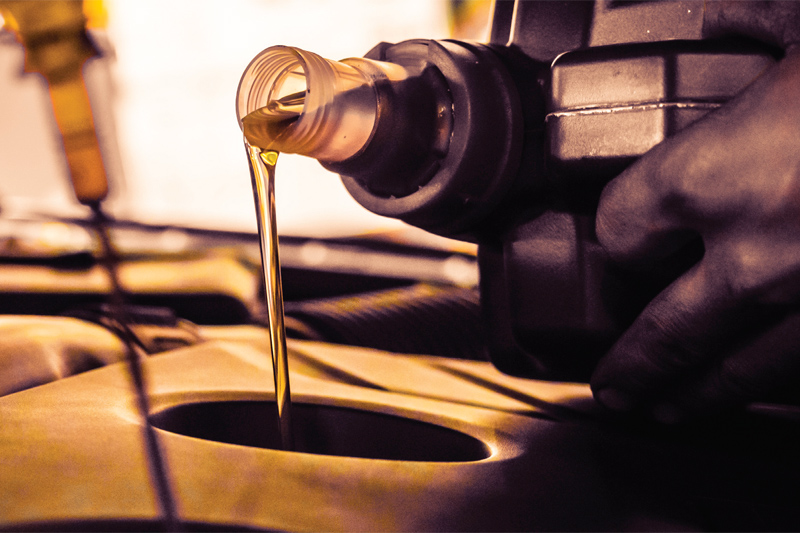
PMM spoke to Andrew Goddard, Chairman of the Verification of Lubricant Specifications (VLS), about how garages can navigate the complex world of engine oil specifications.
There is a great deal of confusion about the use of automotive lubricants. Engine oil is a complex, technical product, best understood by the garages and workshops responsible for servicing their customer’s vehicles, rather than actual motorists themselves.
It is no secret that Original Equipment Manufacturers (OEMs) with large franchised dealer networks want to encourage their customers to have their cars serviced at their premises. OEMs have been known to include lubricants in their franchised dealers’ parts target to encourage the use of their branded oils.
To highlight any possible incidence of anticompetitive practice by major automotive manufacturers, UEIL, the European Lubricants Association, has established a ‘Technical and Competition’ committee. The aim of the committee is to ensure that the necessary technical data for servicing and repair is freely available to the aftermarket, so that they can develop products that are suitable for use.
So, when it comes down to topping up or replacing vehicle lubricants, just how helpful is ‘look in the manual’ as advice?
Working with what you have
Take the example of PSA and the manual for the Peugeot 208. The vehicle owner manual says, ‘Oil specification: The oil must be the correct grade for your engine, and must conform to the manufacturer’s recommendations.’ These recommendations, however, aren’t listed (Fig 1).
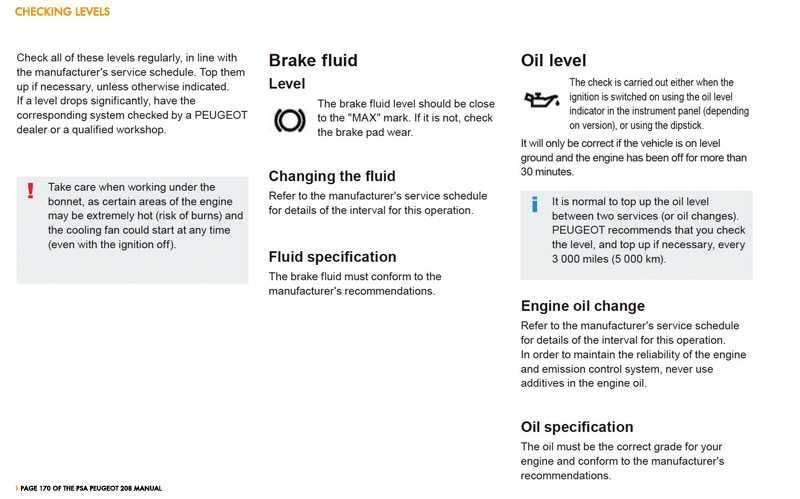
On the next page of the vehicle owner manual (Fig 2), it states that the oil must meet the specification laid out in the manufacturer’s ‘Servicing and Warranty’ booklet, which comes with all new cars.
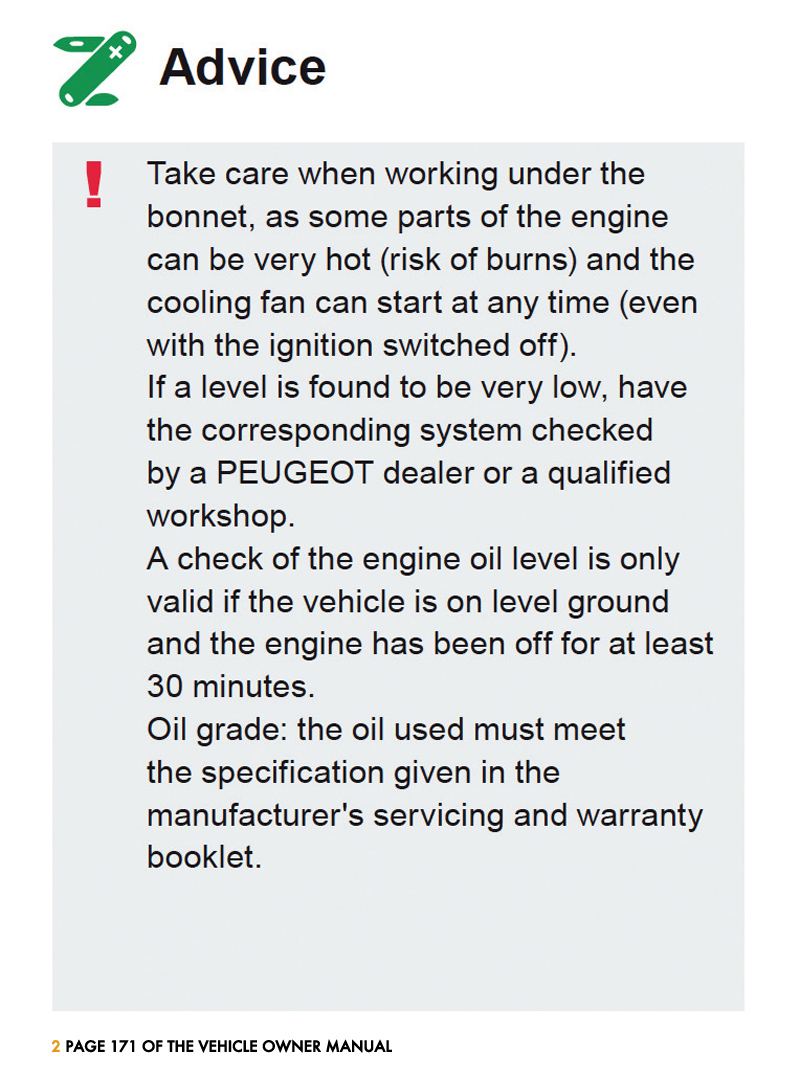
In the ‘Servicing and Warranty’ booklet (Fig 3), the PSA specifications are listed alongside a recommendation to use TOTAL products. But what if your local retailer or distributor doesn’t stock TOTAL products, or you simply want to use another brand?
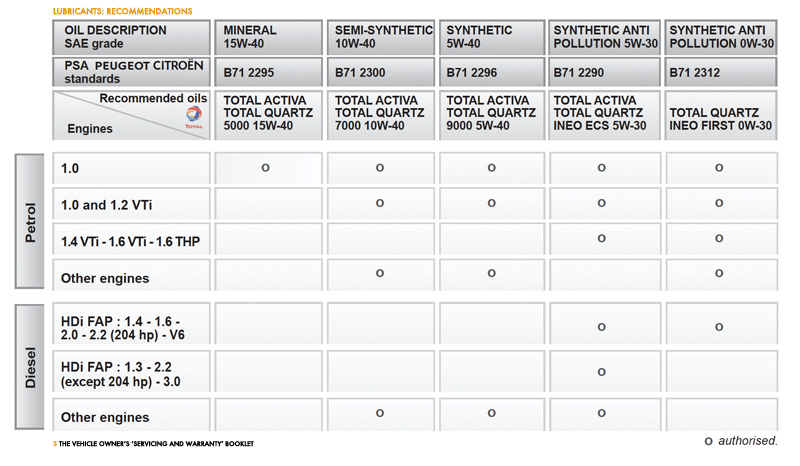
Apart from simple viscosity, which we all know does not indicate the quality of the lubricant, very little else is provided in terms of technical specification to help garages choose an alternative to those listed. This could be due to the fact that both manuals must cover a wide range of different engine specifications and lubricant requirements. However, a simple table giving a technical specification in the back of the booklet would no doubt be helpful.
In the workshop manual servicing schedule, PSA states that ‘an engine oil is defined by a grade – an approval according to the specification laid down by the ACEA – and one or more approvals according to the manufacturer’s specification.’
The grade of the engine oil is defined by the Society of Automotive Engineers (SAE), and according to the technical specifications of the ACEA standards, Peugeot vehicles need very good oil.
Further down the page, Peugeot/Citroën finally makes a set of recommendations about which oil to use (Fig 4), which appear to be quite similar to those contained in the end user ‘Servicing and Warranty’ booklet for the vehicle owner.
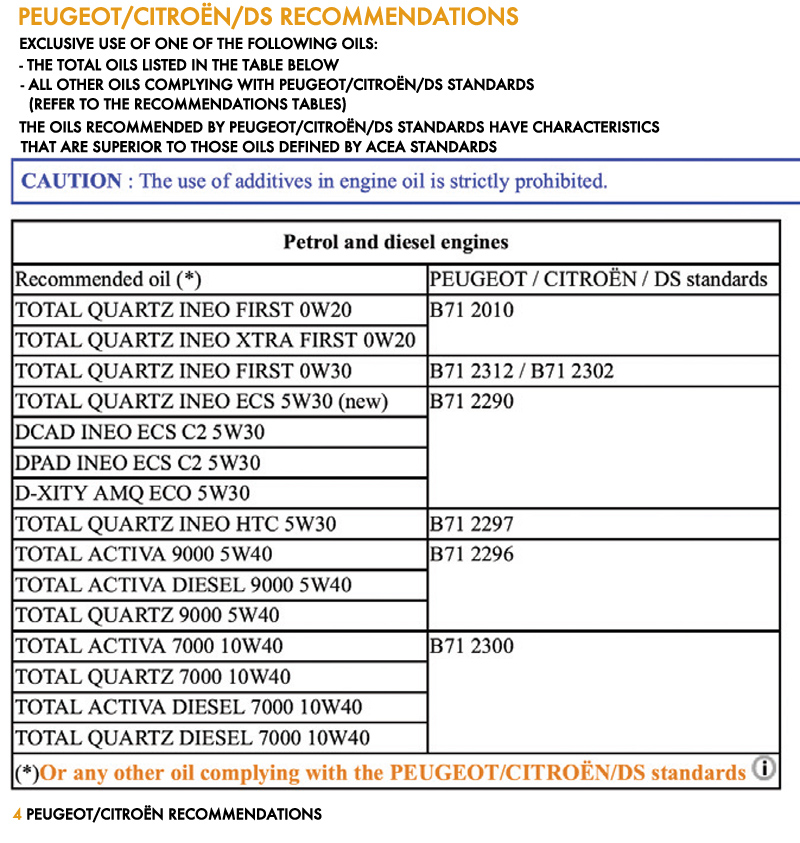
The recommendations are based on a brand name, and ACEA is not mentioned here despite having been mentioned previously. At the bottom of the table, a statement notes that owners can alternatively use ‘any other oil complying with Peugeot/Citroën/DS standards’, but what these might be is not mentioned, and no further reference is provided. There is also no link back to the Peugeot 208, or the oil standard that is required by its particular engine.
The servicing schedule then goes on to list countries by whether they are temperate, cold, or arduous. A listing is given for European fuel types, which links the standard engine type to the viscosity. There is still no direct link to ACEA standards, although the text does caution that C2 must not be used in engines manufactured earlier than 2000.
It’s easy to see why motorists get confused when it’s complicated enough for educated mechanics to decipher. But there is help at hand in deciphering exactly which oil should be used for which car.
A helping hand
Many major lubricant blenders have a database on their website where you can enter a car’s registration to find a list of recommendations and alternative engine oils (Fig 5). These databases are powered by the technical knowledge and expertise of large companies such as OATS in the UK, who plough through numerous owner manuals and service documents to identify the right products for your customer’s vehicle.
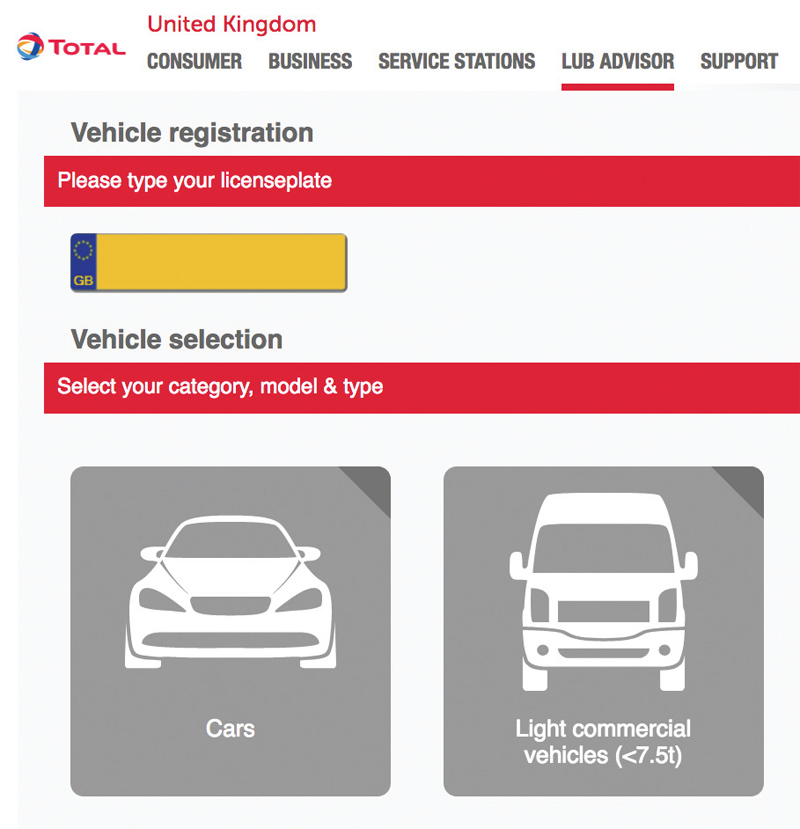
PSA is by no means alone in how they present lubricant information. If they can retain a vehicle owner’s business within their dealership network, then it is beneficial from an economic and control perspective; they can quality assure the work, and pay their dealership at the same time.
However, if the car is an older vehicle, perhaps out of warranty, and the owner wishes to have a choice in which lubricant to use as well as where they have their vehicle serviced, independent workshops and garages have a vital role to play. Using market general formulation or products from reputable brands and stockists, you can use the right lubricant which still meets the requirements of the manufacturer.
Whilst the vehicle handbook might help you identify which one, VLS recommends you consult with your lubricant reseller or retailer, or use one of the comprehensive oil databases available, to ensure you make the right choice of lubricant for the vehicle.









